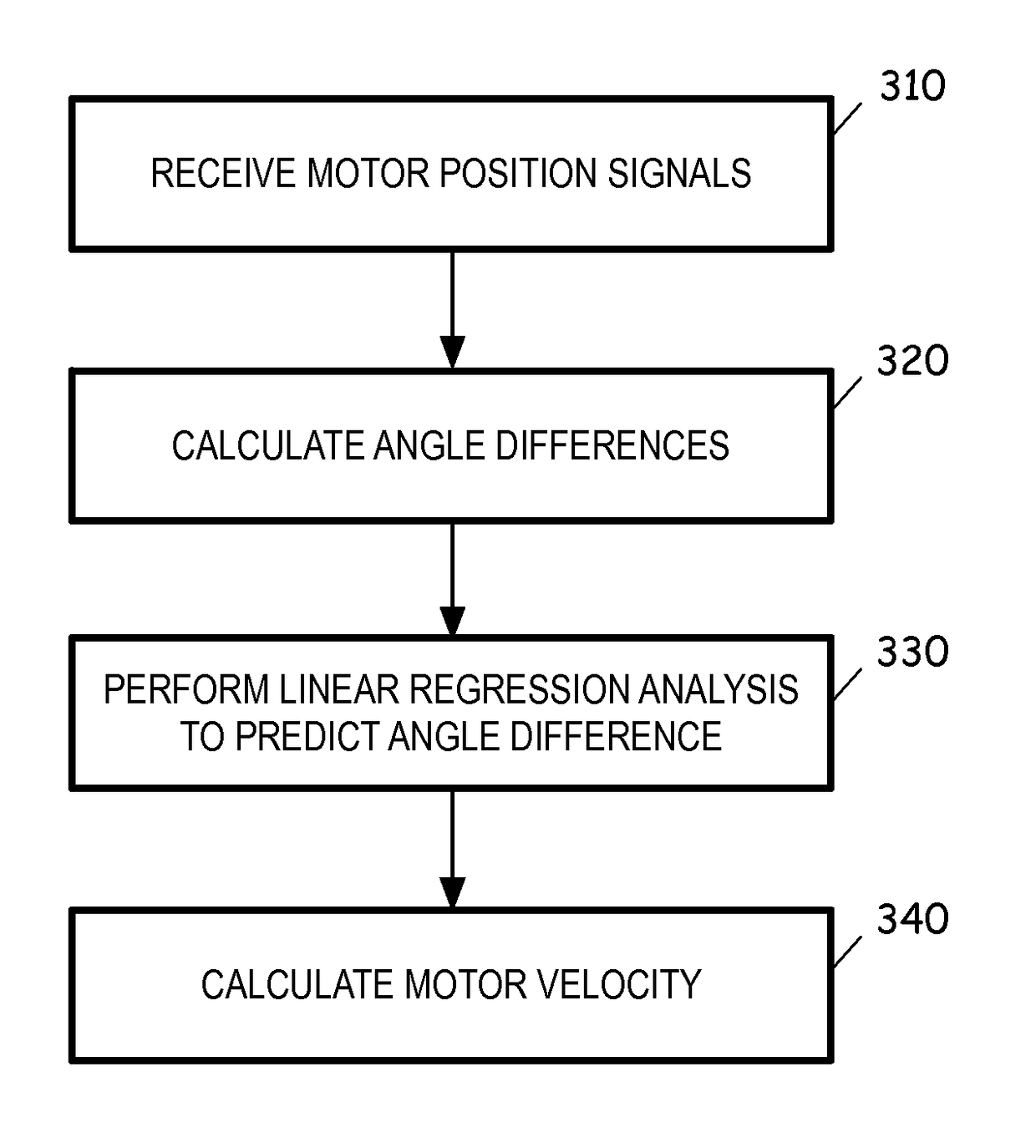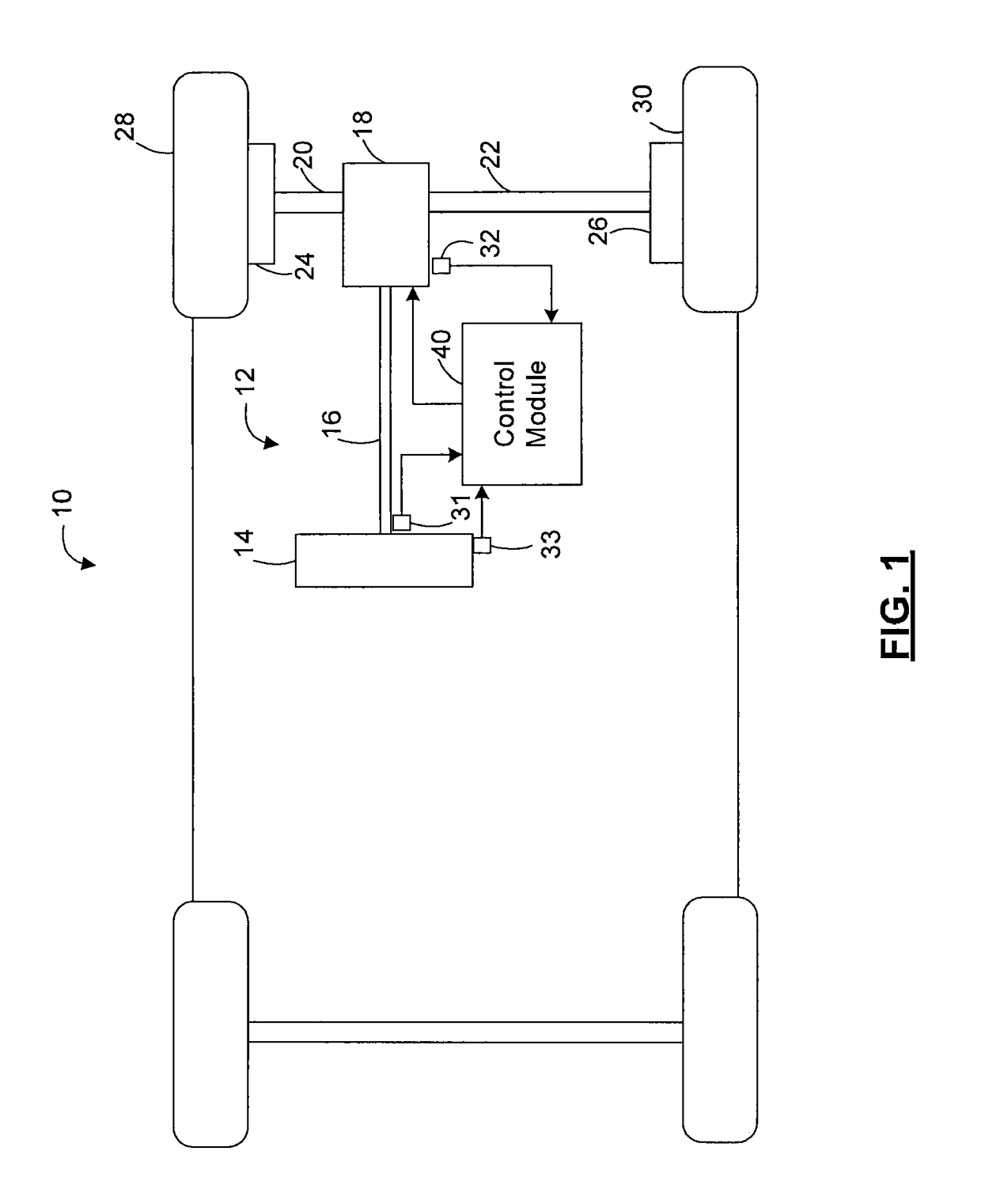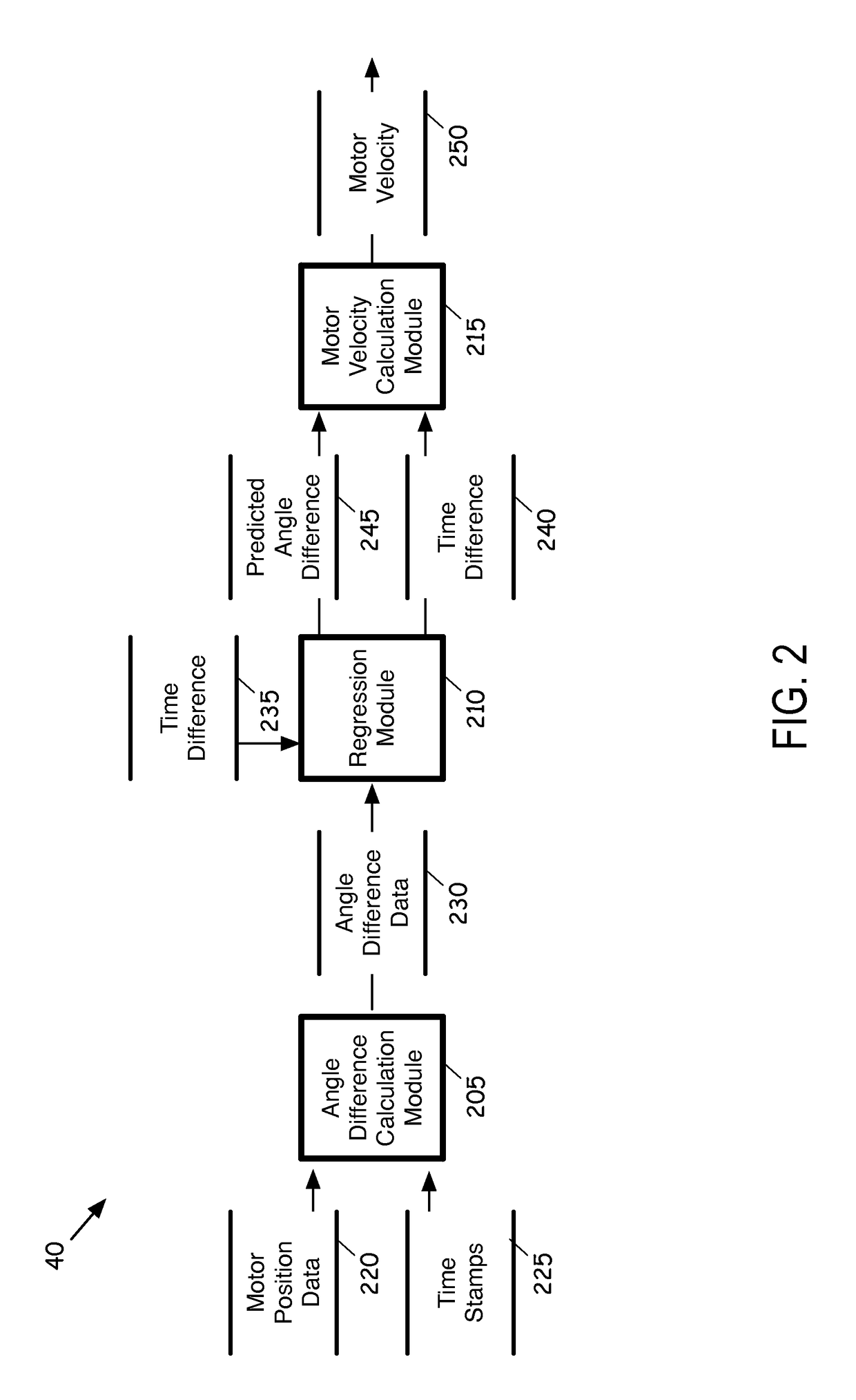Velocity signal filter with reduced lag
a signal filter and velocity technology, applied in the field of velocity signal filter with reduced lag, can solve the problems of inability to achieve the effect of reducing the lag of the signal filter
- Summary
- Abstract
- Description
- Claims
- Application Information
AI Technical Summary
Benefits of technology
Problems solved by technology
Method used
Image
Examples
Embodiment Construction
[0014]The following description is merely exemplary in nature and is not intended to limit the present disclosure, application, or uses. It should be understood that throughout the drawings, corresponding reference numerals indicate like or corresponding parts and features.
[0015]Referring now to FIG. 1, where the invention will be described with reference to specific embodiments without limiting same, an exemplary embodiment of a vehicle 10 including a steering system 12 is illustrated. In various embodiments, the steering system12 includes a hand wheel 14 coupled to a steering shaft 16. In one exemplary embodiment, the steering system 12 is an electric power steering (EPS) system that further includes a steering assist unit 18 that couples to the steering shaft 16 of the steering system 12 and to tie rods 20, 22 of the vehicle 1. The steering assist unit 18 includes, for example, a rack and pinion steering mechanism (not shown) that may be coupled through the steering shaft 16 to a...
PUM
 Login to View More
Login to View More Abstract
Description
Claims
Application Information
 Login to View More
Login to View More - R&D
- Intellectual Property
- Life Sciences
- Materials
- Tech Scout
- Unparalleled Data Quality
- Higher Quality Content
- 60% Fewer Hallucinations
Browse by: Latest US Patents, China's latest patents, Technical Efficacy Thesaurus, Application Domain, Technology Topic, Popular Technical Reports.
© 2025 PatSnap. All rights reserved.Legal|Privacy policy|Modern Slavery Act Transparency Statement|Sitemap|About US| Contact US: help@patsnap.com



